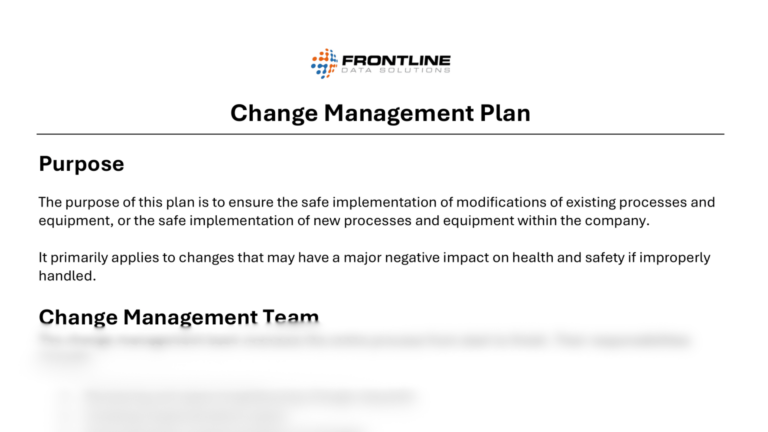Carefully managing changes to things like workplace policies, processes, or equipment is essential for reducing your risk exposure. But for the process to be effective, everyone must follow the steps consistently. Use this outline to create an effective change management implementation plan for your team or organization.
Free Template
Download this free template to create a site-specific change management plan for your team.
What is an Implementation Plan?
An implementation plan is a detailed document outlining how you’ll introduce a new process, policy, procedure, etc., within your company. The planning process alone can help your team troubleshoot issues before they cause problems. And this can have major cost savings, especially for larger-scale projects.
In terms of change management, the purpose of an implementation plan is to avoid disruptions and delays. Having a plan allows your team to focus on their action items and recognize when deadlines need to change. And when the stakes are higher, you can fall back on your plan to make decisions more efficiently, preventing costly setbacks.
Change Management Implementation Plan Outline
When you’re done writing your change management implementation plan, anyone reading it should clearly understand how you’re going to introduce the change. Here are the three main sections you should include in the document.
Purpose
In this section, explain the purpose of the plan and describe your objectives. Also, provide any information or disclaimers that someone would need to know before following the steps.
Change Management Team
You should list all the members of the change management team, as well as their contact details in this section. This is important so everyone knows who’s in charge of the change and where they can go with concerns or questions.
Process Steps
The next section is dedicated to your process steps. It should answer the question: “what are we going to do to implement this change?”
Start with an overview of the step sequence and then describe each step in greater detail. For example, the generic steps I like to follow are:
- New MOC request
- Request approval/denial
- Change implementation
- Startup and closeout
Make sure you include what triggers each step in the process. In other words, “once X happens, this step begins,” or something along those lines.
Successful Change Management Implementation Plan Tips
One of the biggest challenges of change implementation is getting buy-in from managers and workers alike. Adapting to new equipment, processes, etc., isn’t something that happens overnight. But luckily, you can control all the other variables within the process.
Here are some tips for successfully launching a new change:
- Involve decision makers in the planning process.
- Allow people to provide feedback before you solidify the plan.
- Consult workers who will be affected by the change.
- Deal with issues and setbacks before moving on to the next steps in your plan.
- Start with a beta test to fix issues before the full launch.
Following this outline should help you get started. Once you’re done, don’t forget to distribute the document to everyone involved or affected by the changes. If you take the time to create a change management implementation plan, then you’ll be better prepared to handle issues when they arise.





